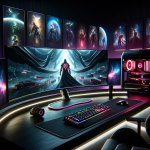Teenagers today can browse Leonardo da Vinci’s Mona Lisa on their phones or see it reproduced on posters in any city, reflecting a wider trend: art experiences are shifting beyond gallery walls. Many worry that this digital boom could overpower traditional museums and dampen personal encounters with art. Yet many in the sector believe the rise of digital platforms presents new opportunities for broadening access and enriching how people engage with creative works. As more art lovers turn to online collections, curators and collectors are navigating how digital and physical experiences can work together, without diminishing either’s unique value. This shift is not just transforming how art is experienced but also shaping the future strategies of the art world.
Recent discussions about declining physical attendance at museums and gallery closures mirror earlier anxieties from other industries adjusting to digital disruption. Data from cultural bodies such as the American Alliance of Museums indicate that while visitor numbers have yet to fully recover to pre-pandemic levels, prominent institutions like the Metropolitan Museum of Art have reported stronger-than-expected attendance. Past analyses expected a continuous decline, but current trends show that interest in art remains strong, especially as digital platforms supplement in-person visits rather than replace them. Compared to previous years, there’s an increased openness to hybrid experiences, signifying a change in how museums and galleries are adapting.
How Are Physical Experiences Still Relevant?
Direct encounters with paintings, sculptures, and installations continue to offer sensory and emotional dimensions that digital platforms cannot fully reproduce. Research by institutions like the Mauritshuis reveals that viewing original artworks can prompt significantly stronger emotional reactions than engaging with digital images. Museum professionals argue that these moments of presence are part of what makes art compelling. As one representative stated,
“The tangibility and atmosphere of standing before a masterpiece create a connection that digital formats can’t entirely replicate.”
Many artists and critics point out that tactile elements—like the thickness of paint or the scale of a sculpture—are best appreciated in person, and remain key to art’s impact.
Can Digital Platforms Expand Art’s Reach?
Digital technologies have made art more accessible to a global audience, with online art market sales projected to account for nearly a fifth of all transactions by 2025. More galleries and institutions, including Sotheby’s and Christie’s, have begun accepting cryptocurrencies to attract younger, tech-forward collectors. Online exhibitions and digital catalogs let art enthusiasts study works in detail from anywhere, democratizing access and opening doors for those outside traditional art centers. In the words of one gallery director,
“Digital access isn’t taking away from in-person experiences—it’s allowing us to connect with broader, more diverse audiences than ever before.”
Is a Balanced Approach Possible?
Rather than viewing digital and physical realms as rivals, many art institutions are treating them as complementary tools. Digital platforms can offer extended engagement, research opportunities, and context that physical spaces may lack, while traditional visits still provide the power of presence and emotional resonance. The challenge is to continue innovating without sacrificing the authenticity or depth of the artistic experience. This approach allows the sector not only to weather economic shifts and changing demographics but also to reimagine what art engagement can look like in a connected world.
Navigating between digital expansion and preserving the unique qualities of in-person art viewing presents opportunities and challenges for museums, galleries, and collectors. Recent years have revealed that adopting a hybrid approach—embracing both screen-based and physical encounters—can support resilience, inclusivity, and audience growth. For readers interested in art, exploring museum online collections or attending digital exhibitions often leads to discoveries beyond what’s possible in person, while occasional gallery visits can deepen appreciation for the material presence of art. Both spheres now rely on one another: digital tools for accessibility and research, and physical venues for sensory and communal experiences.










